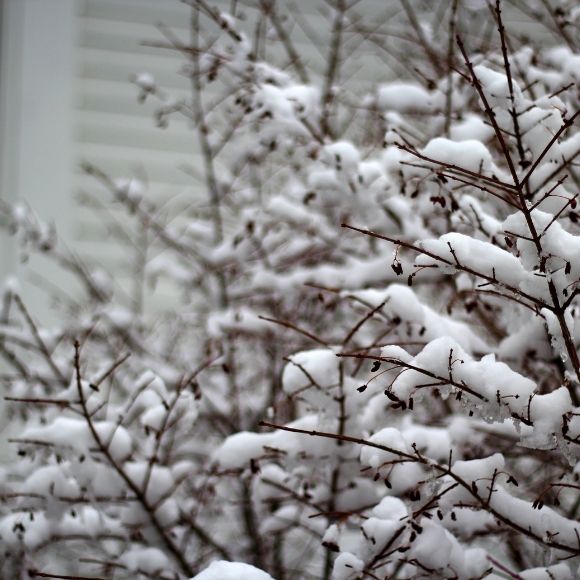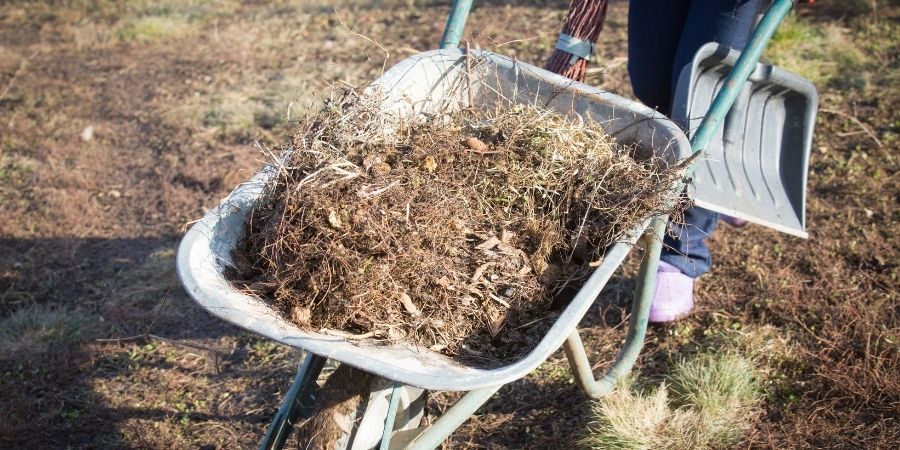The Homeowner’s Guide to Fall Yard Cleanup
- Gardening Expert and Host of Growing a Greener World®October 4, 2025
Why You Should Stop Being So Tidy with Your Fall Garden Cleanup
Years ago, when I was in horticulture and Master Gardener training, the mantra every fall was to “put your garden to bed.” The rationale was that it was important to clean it up. Remove leaf debris and the duff layer beneath your plants to minimize the risks of overwintering diseases that would reinfect your plants the following spring.
It was also recommended that we tidy up everything. Rake up and remove the leaves. Cut back spent flowerheads and stems from native perennials. Basically, sanitize the garden and landscape. While it sounded like a good idea on the surface, it was so short-sighted.
Thankfully, these days, we know much more about what to clean up and, moreover, what not to. The fact is, being too tidy in your fall garden will likely take away more than it gives.

While that’s true, if you have known diseased plants still remaining in the garden, it’s prudent to clean up and remove what you know could persist.
But here’s what we never used to mention, perhaps because we just didn’t know yet. But now we do. As the garden is going dormant each fall, some very important ecological processes are taking place that we should allow to happen. And there’s a cost for being too tidy. Here are some of the unintended consequences:
Vital natural habitat for insects and wildlife is removed
You’ve likely heard the phrase, “leave the leaves” by now. There's a good reason for that. Leaves, stalks, and twigs act as a mulch layer to provide essential winter protection for many of our beloved insects and pollinators, turtles, frogs, toads, and more. They all hunker down under their leafy blanket. And caterpillars use them to wait out the cold also. In spring, birds are able to find them to feed their babies, which they need in great abundance.
Beyond their life-saving benefits, leaves insulate roots and dormant perennials, aid in moisture retention, increase microbial life, reduce compaction, and eventually break down to return nutrients and organic matter to improve the soil.

Seedheads from many summer and fall-blooming flowers, when left standing, provide food for birds and other wildlife at a critical time of year when other food options are scarce or non-existent. Those same seedheads will also drop their remaining seeds eventually. By cleaning up too soon, much of that natural regeneration we want in our gardens never happens.
Many flowers we grow in our gardens have hollow, pithy stems, exactly where solitary native bees lay their eggs. By waiting until mid to late spring to cut back your perennials, the stems and leaves will help protect the soil and provide safe habitats for overwintering insects until they emerge.
Winter interest is lost
While I love a winter landscape blanketed by snow, much of what we’ve been taught to remove during our fall cleanup eliminates a lot of the added beauty if we left it in place. That rough, natural look has its own charm and can make a bare, stark garden visually richer.
Seedheads and tall stems, dried grasses, and deciduous shrubs in need of pruning all add a wild beauty of structure, texture, and silhouette to the winter landscape. (And save the fall pruning for spring, which is a much better time for that.)
Cleanup is more labor-intensive in the fall
Beyond what I consider the most important reason to be less tidy in the fall landscape, protecting overwintering wildlife, cleanup can be easier and more strategic by waiting. There’s simply less labor in the spring for major cleanup.
Let nature do the work. All the remaining flower stalks are easier to handle, and the duff layer beneath your plants and leaves is easier to remove if you feel the need to do so. And, you’ll be amazed to find what survived because you left things alone over winter, under the protective cover of nature’s natural mulch—no more guessing at what’s alive or worth keeping.
When fall landscape cleanup is warranted
As a self-confessed neat freak, there are times when a fall cleanup is warranted.
The obvious one is plants that are heavily diseased. It’s always best to remove the source as early as possible. It’s not a guarantee that you will eliminate a recurrence in spring, but you certainly reduce the odds.

If your lawn is blanketed with a thick layer of leaves, rake them off or relocate them. Lawns with a light leaf layer should be fine over winter, but if it’s too thick, you can put your lawn at risk and add to your workload next spring.
The same applies to areas where sun exposure is needed for the early emergence of spring-flowering bulbs. While bulbs are remarkably resilient and well-adapted at pushing through to the light, be mindful of when you may need to allocate for this in late fall.
If you truly dislike the look of a more natural appearance in your landscape or garden during the winter months, do what you need to, but use a lighter touch if possible.
And certainly, clean up anything that may pose a hazard from slipping or tripping, or otherwise.
Final thoughts
I doubt there is something immensely satisfying about heading into winter, feeling like you’ve done your part to button up everything outdoors before you take your winter break. But this time, why not give yourself permission to ease off on the cleanup? Allow nature to have its time to complete some vital unfinished work. Let the seed heads stand, leave the leaves, and know your wildlife, your soil, and your spring self will thank you.

